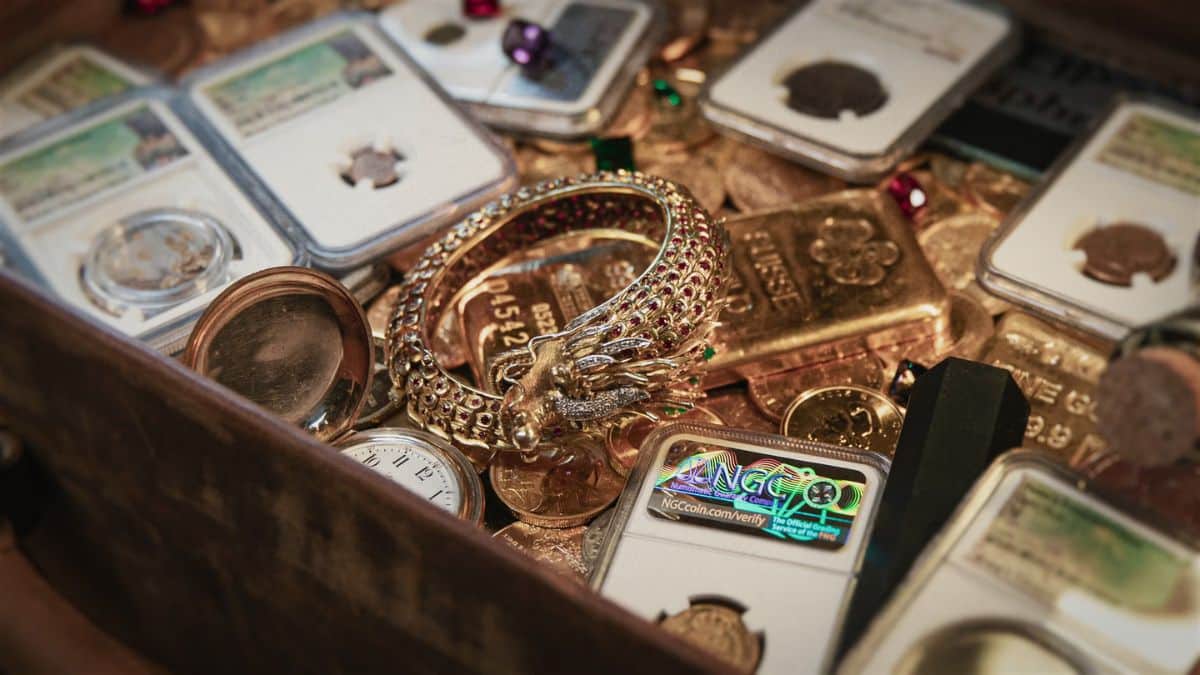The discovery of hidden treasures in real estate properties has captivated the imagination of homeowners worldwide. In 2021, an American attorney named David Whitcomb experienced what many would consider the ultimate property investment windfall – uncovering a valuable historical collection worth more than double his initial purchase price. This extraordinary story highlights the fascinating possibilities that lie behind the walls of older buildings and raises important questions about ownership rights when unexpected valuables are discovered.
A remarkable discovery behind a suspended ceiling
When attorney David Whitcomb purchased a building in Geneva, New York for approximately $100,000, his intention was simply to establish a new office space for his legal practice. During his initial inspection of the property, something peculiar caught his attention – a section of the third-floor ceiling appeared oddly “suspended.” This unusual architectural feature prompted his curiosity.
Following his intuition, Whitcomb decided to investigate further by removing the suspicious ceiling section. What he found left him astounded – a hidden access point to a completely concealed room that no previous owner had apparently discovered or explored. The secret space wasn’t empty – far from it.
Inside this forgotten chamber, Whitcomb uncovered a treasure trove of historical significance: over 1,000 photography-related artifacts dating back to the early 20th century. The collection included vintage cameras, period furniture, decorative items, and numerous photographic portraits. Historical records indicated the building had once belonged to James Ellery Hale, a prominent photographer who had evidently sealed this room when relocating, leaving behind his extensive collection.
Experts who evaluated the find estimated its value between $150,000 and $200,000 – more than twice the purchase price of the entire building. This remarkable discovery transformed what was already a sensible real estate investment into an extraordinary financial windfall.
In 2019, Iceland Approved the 4-Day Workweek: Nearly 6 Years Later, All Forecasts by Generation Z Have Come True
At 94, He’s One of Apple’s Biggest Shareholders, and Doctors Can’t Explain How He’s Still Alive-Coca-Cola and McDonald’s Are Part of His Daily Routine
The legal framework for treasure findings
Discovering hidden valuables on your property raises important legal questions about ownership rights. According to civil code definitions, a “treasure” typically refers to any hidden or buried item for which no one can prove ownership, discovered by pure chance. The legal distinction between accidental discoveries and deliberate searches significantly impacts ownership rights.
When treasures are found accidentally, as in Whitcomb’s case, the legal framework generally favors the finder. The basic principles governing such discoveries include:
- If you find a treasure on your own property, you typically retain full ownership
- If discovered on someone else’s property, ownership is often split equally between finder and property owner
- The discovery must be genuinely accidental, not the result of deliberate searching
- The items must not have been visibly apparent
- Local authorities should be notified immediately after discovery
Conversely, intentional treasure hunting, particularly using metal detectors or specialized equipment, faces much stricter regulations. Most jurisdictions restrict such activities, particularly regarding historical artifacts predating 1875 or items of military significance from major conflicts like World War I and World War II.
| Discovery Type | Ownership Rights | Legal Requirements |
|---|---|---|
| Accidental (during renovation) | Favorable to finder/property owner | Notify local authorities |
| Deliberate search (with equipment) | Limited rights, varies by jurisdiction | Permits often required, strict limitations |
| Items on public land | Usually belongs to the public/state | Mandatory reporting |
It races through the universe at 300,000 km/s - and never runs out of energy
Beneath your feet: an ancient forgotten continent resurfaces in Europe
The auction and financial windfall
Following the extraordinary discovery, Whitcomb decided to offer the collection at auction through Invaluable, a specialized auction platform. The auction, scheduled for September 18, 2021, generated significant interest among collectors and photography enthusiasts worldwide.
The financial implications of this find are remarkable when we consider the following progression:
- Initial property investment: approximately $100,000
- Conservative estimated value of discovered items: $150,000-$200,000
- Total property value post-discovery: potentially $250,000-$300,000
- Return on investment percentage: 150-200%
This extraordinary case illustrates how hidden historical collections can dramatically increase property values overnight. While Whitcomb’s discovery represents an exceptionally rare occurrence, it serves as a fascinating reminder of the unexpected potential that exists within older properties with rich histories.
For prospective real estate investors, this story underscores the importance of thorough property inspections and the potential value of historical research when purchasing older buildings. While few will uncover treasures of this magnitude, understanding a property’s past occupants and uses can occasionally reveal surprising value beyond the structure itself.







